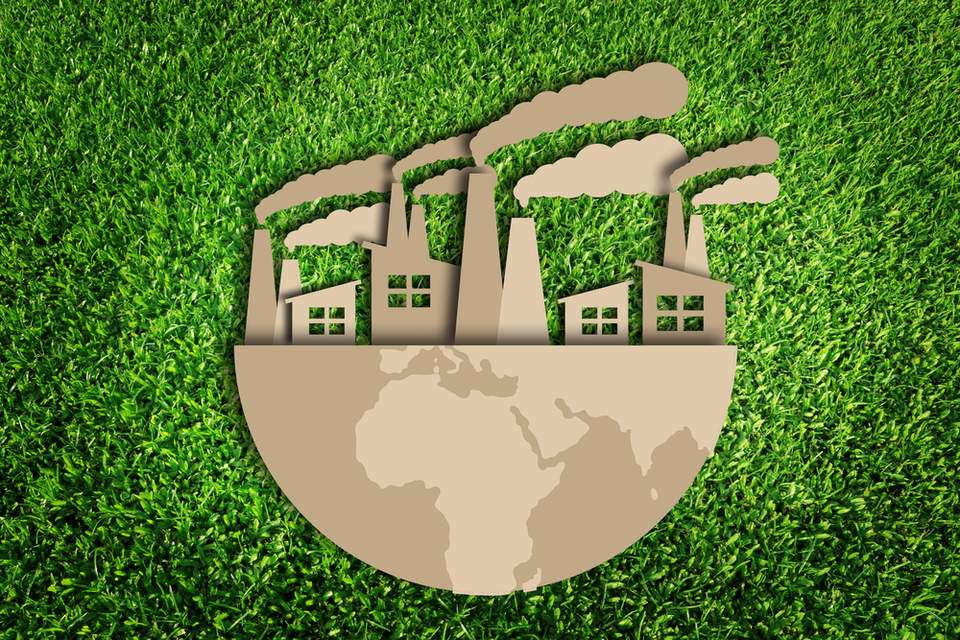Businesses across the US are always looking for ways to save money. Since the financial crash a few years ago, it’s certainly been high on the agenda. While some business owners may say that going green involves spending more bucks, the opposite is actually true. It’s easy to become a green business nowadays and it saves you big money in the long run.
Not only that, the companies that go for a low carbon approach are getting more customers who prefer to deal with a green business that cares about the environment.
According to the David Suziki Foundation:
“Around the world, a growing number of businesses are taking steps to manage their greenhouse gas emissions and reduce their climate impact. These businesses are enhancing their brands, motivating employees, becoming more efficient, and saving money.”
1. Going Paperless
We print far too much stuff. It’s a common complaint about many businesses. The good news is that great technology is at hand. Today’s state-of-the-art multi-function printers are designed to cut down costs. All it takes is a small investment and a change of policy. Rather than print paper copies, we can send a large amount to our digital devices nowadays which can be just as easily read. Modern printers also have better energy ratings and shut down automatically when not in use – saving valuable dollars when it comes to electricity bills.
2. Improve Health and Productivity
Many businesses are now actively encouraging their staff to use greener ways of getting into the office. Cycling to work or car-sharing is just two options. But there are others such as video conferencing rather than driving to a meeting or even allowing employees to work from home more. Getting your staff to cycle into work or walk more is a great way to stay fit and can improve health and productivity in the office.
3. Introduce Energy Efficient Lighting
We hardly notice it but lighting is one of the major drains on office budgets for businesses across the US. Swapping to more energy-efficient LEDs can make a huge difference. If you still have the old tungsten or incandescent lights, then you can save as much as 70% on your bills, and replacing CFLs with LEDs can save you 10 to 20%. Over a year that’s a significant amount of bucks and the even better news is that LED light bulbs are built to last much longer.
Using the energy efficiency programs on all your devices such as PCs and printers can save you a good deal too, particularly turning them off when everyone leaves for the day.
4. Recycle Your Waste
You’d be surprised at the number of corporations and businesses in the US that don’t recycle enough. While the big boys like Google make it part of their company ethos, others are failing to put in the recycling bins that help staff be eco-friendly. If you want to be a green business, then you need to recycle and that includes having a strategy in place that your staff adheres to.
According to Recycle Across America:
“Currently less than 35% of households and less than 10% of businesses in the U.S. recycle. Those levels have barely improved in 15 years despite billions of dollars spent on competitions, symposiums, awareness campaigns and sorting technologies.”
5. Purchase from a Green Business
Another way that offices can make an impact on their carbon footprint is by purchasing from other’s who run a green business. It’s not just about the products and how they are made but the amount of fuel that is used in transporting goods. Take a look at your office suppliers and see where they are based (it’s better to shop local) and what they do to cut down on their carbon footprint. Don’t simply limit it to your business, why not get your staff to engage with locally produced goods.
6. Do Something Big
While many a green business is naturally constrained by the amount of budget they have available, embracing new technology can make a big difference. Large corporations have made the move to sustainable electricity production including solar panels that dramatically reduce carbon footprints and provides clean energy for the community.
In 2015, the home furnishing giant IKEA installed a 730 kW array in Merriam that is designed to produce nearly a million kWh each year. While that size of the installation is beyond most small to medium-size businesses, the return on investment in many states is pretty good for this technology.
The Benefits of Being a Green Business
There are plenty of good reasons for a business to do everything it can to reduce that troublesome carbon footprint.
First of all, it’s great PR. If your company is engaged with the community and shows that it is doing everything in its power to make sure that waste is reduced and new, cleaner technology is embraced, customers will notice. Making it part of your marketing strategy can bring benefits in terms of customer engagement and standing in the local community.
Secondly, going green can often save you money. Cutting down those electricity bills is a good idea. Simple things like shutting off the lights and powering down computers properly when everyone leaves for the day, make a big difference. Introducing green measures also makes for a healthier workforce and improved productivity.
There are incentives from the federal and state government for going green. That means you get tax credits for installing energy-efficient heating or even solar power. If you run a fleet of vehicles swapping to hybrid cars or vans can also benefit from tax breaks.
Finally, it’s actually something that consumers are beginning to demand. They’re not standing outside your office with placards beseeching you to become a green business – they’re voting with the feet, choosing to deal with companies that have an eco-friendly agenda.
Fortunately, reducing your carbon footprint doesn’t have to be accomplished all in one go. There is plenty of scope for a potential green business to move towards a carbon-neutral position by introducing changes over several months or even years.

About the Author
Jen is your go-to guru for crafting a cozy, green cocoon. 🪴 Her dive into sustainable building wasn’t just about saving the planet—it started as a mission to make family movie nights eco-friendly (and to ensure the popcorn was the only thing getting heated!). With a knack for breaking down the jargon, Jen turns eco-lingo into everyday language. Swing by the Green Living blog for a mix of earth-loving advice and home improvement hacks. Whether you’re just dipping your toes into green waters or you’ve been swimming in the deep end of DIY projects, Jen’s here to guide, giggle, and remind you that every eco-choice is a step towards a planet that thanks you… and maybe even sends a rainbow your way! 🌈


